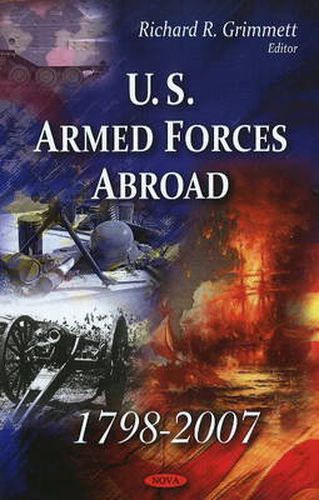Readings Newsletter
Become a Readings Member to make your shopping experience even easier.
Sign in or sign up for free!
You’re not far away from qualifying for FREE standard shipping within Australia
You’ve qualified for FREE standard shipping within Australia
The cart is loading…






The President and Congress have historically played different roles when sending U.S. troops into hostile situations. The President has the power under Article II, Section 2, of the Constitution to use the armed forces to repel attacks. Congress under Article I, Section 8, has the power to declare war and raise and support the armed forces. The War Powers Resolution was enacted to ensure that the President and Congress share decisions where U.S. troops may become involved in hostilities. This sharing of power has often resulted in controversy, particularly when troops are sent into situations where there has not been a formal declaration of war. In most instances, Congress has used its legislative prerogatives through funding mechanisms or declarations of policy either to affirm or to place limits on presidential action. In three instances, Congress has authorised the use of military force in advance of hostilities: the Persian Gulf War (1991), military operations in Afghanistan (2001), and the use of force against Iraq resolution (2002). In each case, however, the President has maintained that while he may have sought congressional consultation and support, the President has the constitutional authority as Commander in Chief to use force, including the armed forces of the United States, to protect U.S. national security interests.
$9.00 standard shipping within Australia
FREE standard shipping within Australia for orders over $100.00
Express & International shipping calculated at checkout
The President and Congress have historically played different roles when sending U.S. troops into hostile situations. The President has the power under Article II, Section 2, of the Constitution to use the armed forces to repel attacks. Congress under Article I, Section 8, has the power to declare war and raise and support the armed forces. The War Powers Resolution was enacted to ensure that the President and Congress share decisions where U.S. troops may become involved in hostilities. This sharing of power has often resulted in controversy, particularly when troops are sent into situations where there has not been a formal declaration of war. In most instances, Congress has used its legislative prerogatives through funding mechanisms or declarations of policy either to affirm or to place limits on presidential action. In three instances, Congress has authorised the use of military force in advance of hostilities: the Persian Gulf War (1991), military operations in Afghanistan (2001), and the use of force against Iraq resolution (2002). In each case, however, the President has maintained that while he may have sought congressional consultation and support, the President has the constitutional authority as Commander in Chief to use force, including the armed forces of the United States, to protect U.S. national security interests.